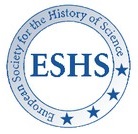TRANSGENE on European genomics
Blog content
At the recent conference of the European Society for the History of Science in London, the TRANSGENE team organised a symposium chaired by Robert Bud on the crucial role of European transnational collaboration in the history of genomics.
 We argued that the narrative that equates genomics with human genomics, and in particular the Human Genome Project, has helped the European contribution to the emergence and development of genomics to remain obscure.
We argued that the narrative that equates genomics with human genomics, and in particular the Human Genome Project, has helped the European contribution to the emergence and development of genomics to remain obscure.
Against this narrative, we detailed the key contributions of the European Commission in fostering international collaboration during the early history of yeast, human and pig genomics.
In particular, we focused on:
- The yeast genome sequencing project (1989-1996), directed by the Commission’s Directorate-General XII (DGXII) for Science, Research, and Development, which involved more than 80 institutions across Europe. Drawing this massive European effort together with yeast genome sequencing projects in North America and Japan generated a single reference sequence and united a global yeast genomics community. (Paper by Erika Szymanski)
- The Human Genome Analysis Programme (1990-1992), which was also supported by DGXII and originally immersed into a broader initiative on predictive medicine within the BIOMED-1 programme. This programme enabled human and medical geneticists to pool their results, mainly through the funding of chromosome mapping workshops in Europe. (Paper by Miguel Garcia-Sancho, with Gulsah Albayrak)
- For the pig, genome mapping initiatives were organised and funded by the Commission’s BRIDGE and BIOTECH programmes (PiGMaP, 1991-1996). There were a number of successor projects to further improve the genomic resources available to researchers, and the Commission eventually funded parts of the project to fully sequence the pig genome (2003-2009). (Paper by James Lowe)
As well as tracing the history of genomics in Europe, we presented a number of quantitative techniques that help towards this goal. Mark Wong (who presented at the symposium), with Rhodri Leng and Gil Viry, have been developing methods in bibliometrics and Social Network Analysis (SNA) that enable us to visualise how European institutions collaborated between themselves and with institutions in other continents in the sequencing of yeast, human and pig.
